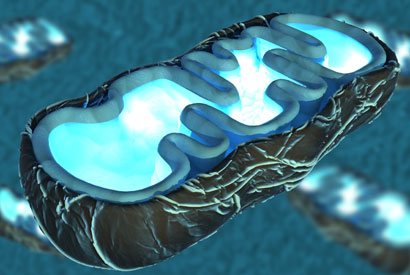Even at a Molecular Level, Taking it Slow Helps Us Cope With Stress
UC Berkeley scientists have identified a new molecular pathway critical to aging, and confirmed that the process can be manipulated to help make old blood like new again.

The researchers found that blood stem cells’ ability to repair damage caused by inappropriate protein folding in the mitochondria, a cell’s energy station, is critical to their survival and regenerative capacity.
The discovery, to be published in the March 20 issue of the journal Science, has implications for research on reversing the signs of aging, a process thought to be caused by increased cellular stress and damage.
“Ultimately, a cell dies when it can’t deal well with stress,” said study senior author Danica Chen, an assistant professor in the Department of Nutritional Sciences and Toxicology. “We found that by slowing down the activity of mitochondria in the blood stem cells of mice, we were able to enhance their capacity to handle stress and rejuvenate old blood. This confirms the significance of this pathway in the aging process.”
Mitochondria host a multitude of proteins that need to be folded properly to function correctly. When the folding goes awry, the mitochondrial unfolded-protein response, or UPRmt, kicks in to boost the production of specific proteins to fix or remove the misfolded protein.
Chen’s lab stumbled upon the importance of UPRmt in blood stem cell aging while studying a class of proteins known as sirtuins, which are increasingly recognized as stress-resistance regulators.
The researchers noticed that levels of one particular sirtuin, SIRT7, increase as a way to help cells cope with stress from misfolded proteins in the mitochondria. Notably, SIRT7 levels decline with age.
There has been little research on the UPRmt pathway, but studies in roundworms suggest that its activity increases when there is a burst of mitochondrial growth.
Chen noted that adult stem cells are normally in a quiescent, standby mode with little mitochondrial activity. They are activated only when needed to replenish tissue, at which time mitochondrial activity increases and stem cells proliferate and differentiate. When protein-folding problems occur, however, this fast growth could lead to more harm.
“We isolated blood stem cells from aged mice and found that when we increased the levels of SIRT7, we were able to reduce mitochondrial protein-folding stress,” said Chen. “We then transplanted the blood stem cells back into mice, and SIRT7 improved the blood stem cells’ regenerative capacity.”
The new study found that blood stem cells deficient in SIRT7 proliferate more. This faster growth is due to increased protein production and increased activity of the mitochondria, and slowing things down appears to be a critical step in giving cells time to recover from stress, the researchers found. Chen likened this to an auto accident or stalled car jamming traffic on a freeway.
“You can deal with this congestion by removing all the cars that are blocked, but you can also stop more cars from getting onto the freeway,” she said. “When there’s a mitochondrial protein-folding problem, there is a traffic jam in the mitochondria. If you prevent more proteins from being created and added to the mitochondria, you are helping to reduce the jam.”
Until this study, it was unclear which stress signals regulate the transition of stem cells to and from the quiescent mode, and how that related to tissue regeneration during aging.
“Identifying the role of this mitochondrial pathway in blood stem cells gives us a new target for controlling the aging process,” said Chen.
UC Berkeley co-lead authors of the study are postdoctoral researcher Mary Mohrin and graduate students Jiyung Shin, Yufei Liu and Katharine Brown.
The National Institutes of Health, Ellison Medical Foundation, Glenn Foundation, National Science Foundation and Siebel Stem Cell Institute helped support this research.
RELATED INFORMATION
- Discovery opens the door to a potential ‘molecular fountain of youth’ (UC Berkeley press release)
